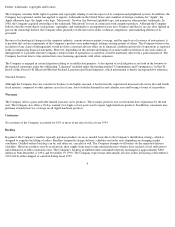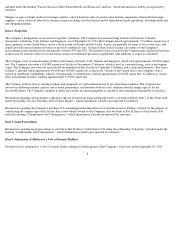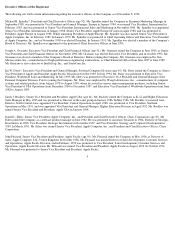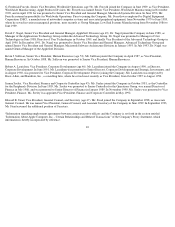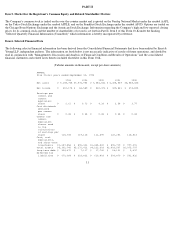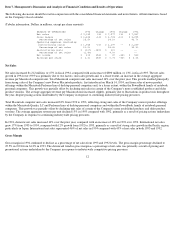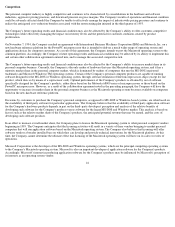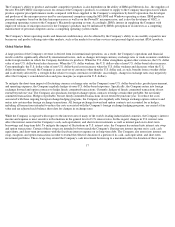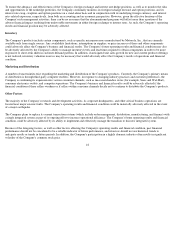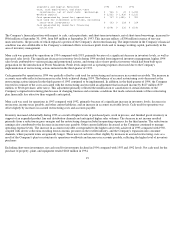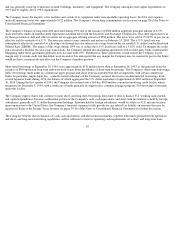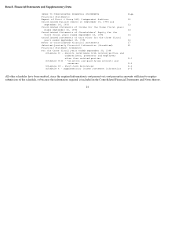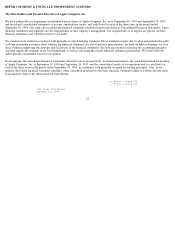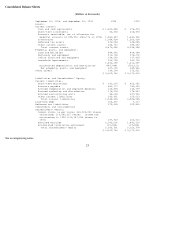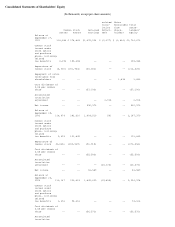Apple 1994 Annual Report Download - page 18
Download and view the complete annual report
Please find page 18 of the 1994 Apple annual report below. You can navigate through the pages in the report by either clicking on the pages listed below, or by using the keyword search tool below to find specific information within the annual report.Competition
The personal computer industry is highly competitive and continues to be characterized by consolidations in the hardware and software
industries, aggressive pricing practices, and downward pressure on gross margins. The Company's results of operations and financial condition
could be adversely affected should the Company be unable to effectively manage the impact of industrywide pricing pressures and continue to
realize the anticipated cost -reduction benefits associated with the restructuring plan initiated in the third quarter of 1993.
The Company's future operating results and financial condition may also be affected by the Company's ability to offer customers competitive
technologies while effectively managing the impact on inventory levels and the potential for customer confusion created by product
proliferation.
On November 7, 1994, the Company reached an agreement with International Business Machines Corporation (IBM) and Motorola, Inc. on a
new hardware reference platform for the PowerPC microprocessor that is intended to deliver a much wider range of operating system and
application choices for computer customers. As a result of this agreement, the Company intends to port the Macintosh operating system to the
common platform. Accordingly, the Company's future operating results and financial condition may be affected by its ability to implement this
and certain other collaboration agreements entered into, and to manage the associated competitive risk.
The Company's future operating results and financial condition may also be affected by the Company's ability to increase market share in its
personal computer business. Currently, the Company is the only maker of hardware that uses the Macintosh operating system, and it has a
minority market share in the personal computer market, which is dominated by makers of computers that run the MS-DOS (registered
trademark) and Microsoft Windows(TM) operating systems. Certain of the Company's personal computer products are capable of running
software designed for the MS-DOS or Windows operating system, through software emulation of Intel microprocessor chips (except for one
product, which does so by means of a coprocessor card). Optimal performance of the Company's products is obtained by use of software
specifically designed for the Company's products, either those based on the Motorola 68000 series of microprocessors or those based on the
PowerPC microprocessor. However, as a result of the collaboration agreement noted in the preceding paragraph, the Company will have the
opportunity to increase its market share in the personal computer business as the Macintosh operating system becomes available on computers
based on the new hardware reference platform.
Decisions by customers to purchase the Company's personal computers, as opposed to MS-DOS or Windows-
based systems, are often based on
the availability of third-party software for particular applications. The Company believes that the availability of third-
party application software
for the Company's hardware products depends in part on the third- party developers' perception and analysis of the relative benefits of
developing such software for the Company's products versus software for the larger MS-DOS and Windows market. This analysis is based on
factors such as the relative market share of the Company's products, the anticipated potential revenue that may be earned, and the costs of
developing such software products.
In an effort to increase overall market share, the Company plans to license the Macintosh operating system to other personal computer vendors
beginning in 1995. The Company anticipates that the licensing activities will result in a variety of these vendors bringing to market personal
computers that will run application software based on the Macintosh operating system. The Company also believes that licensing will offer
software vendors a broader installed base on which they can develop and provide technical innovations for the Macintosh platform. At this
time, the Company cannot determine the ultimate effect that licensing of the Macintosh operating system will have on its sales or results of
operations.
Microsoft Corporation is the developer of the MS-DOS and Windows operating systems, which are the principal competing operating systems
to the Company's Macintosh operating system. Microsoft is also an important developer of application software for the Company's products.
Accordingly, Microsoft's interest in producing application software for the Company's products may be influenced by Microsoft's perception of
its interests as an operating system vendor.
16


